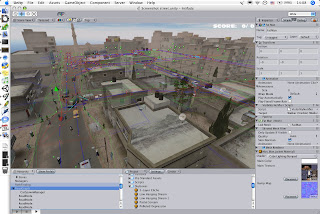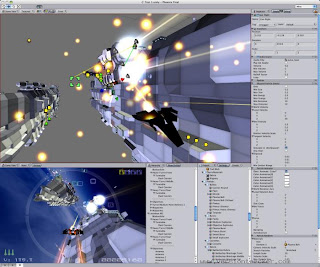
#1: ATI graphics cards are now also fully supported
#2: Introduction of city layer editing functionalities
#3: Several minor improvements such as 100x faster street growth
A blog showcasing a range of subjects, such as personal work-in-progress research and/or activities to related news items in the world of computer science...







 Freeworld3D 2.0 was developed from the ground up, featuring a brand new rendering engine with the following features:
Freeworld3D 2.0 was developed from the ground up, featuring a brand new rendering engine with the following features:










 It is expected that the issue will contain four or five original essays, along with two or three classic papers that document the impact of games on the development of computer science or computing technology. The original essays should not exceed 7,500 words in length, including all text, the abstract, keywords, bibliography, biography and captions. Deadline for abstracts is 15th of May.
It is expected that the issue will contain four or five original essays, along with two or three classic papers that document the impact of games on the development of computer science or computing technology. The original essays should not exceed 7,500 words in length, including all text, the abstract, keywords, bibliography, biography and captions. Deadline for abstracts is 15th of May. 

 The patent was filed on June 24 this year. The breakapart controller displayed in images accompanying the filings could be assembled as a large sound- and space-sensing scepter. If such a product ever sees the light of day, it could look considerably different than the pictures exhibit, as SCEA stated "certain changes and modifications may be practiced" within the parameters of the patent.
The patent was filed on June 24 this year. The breakapart controller displayed in images accompanying the filings could be assembled as a large sound- and space-sensing scepter. If such a product ever sees the light of day, it could look considerably different than the pictures exhibit, as SCEA stated "certain changes and modifications may be practiced" within the parameters of the patent.
 Autodesk bought Maya creator Alias in 2006, and has kept development of the application going ever since. Last year it bought high-end renderer Mudbox creator Skymatter, and in early 2008 acquired AI specialist Kynogon. Founded in 1986 by Daniel Langlois, Softimage's technology is already in use a number of entertainment graphics and special effects firms, including Digital Domain, Ubisoft, Sega, Capcom, and The Mill. The company itself has had a chequered ownership history, at one point being owned by Microsoft before being bought by Avid and integrated into its large family of digital editing and media tools. Avid will be paid around $35m for the acquisition.
Autodesk bought Maya creator Alias in 2006, and has kept development of the application going ever since. Last year it bought high-end renderer Mudbox creator Skymatter, and in early 2008 acquired AI specialist Kynogon. Founded in 1986 by Daniel Langlois, Softimage's technology is already in use a number of entertainment graphics and special effects firms, including Digital Domain, Ubisoft, Sega, Capcom, and The Mill. The company itself has had a chequered ownership history, at one point being owned by Microsoft before being bought by Avid and integrated into its large family of digital editing and media tools. Avid will be paid around $35m for the acquisition. "If the UK video games industry is to maintain its competitive edge then we must address the skills shortages hampering the industry. We need to improve standards in mathematics and the sciences in schools in order to increase the potential pool of graduates in these disciplines. Stronger financial incentives to attract the best graduates to teach in schools are part of the solution," said Richard Wilson, CEO of Tiga.
"If the UK video games industry is to maintain its competitive edge then we must address the skills shortages hampering the industry. We need to improve standards in mathematics and the sciences in schools in order to increase the potential pool of graduates in these disciplines. Stronger financial incentives to attract the best graduates to teach in schools are part of the solution," said Richard Wilson, CEO of Tiga.
 According to Skillset, this year’s programme includes:
According to Skillset, this year’s programme includes:









This is a must read for anyone interested in games development as it offers a very detailed insight in the step-by-step development of a top modern gaming title ranging from initial storyboarding to the role of the programmers in the modelling/animation of the game assets.
Tons of images featured in there too which make the description of the processes even more insightful. Easily one of the best features I've seen in this area, check it out at the official XSI site, found at the link below, if only more game developers bothered to do 'making ofs' of this calibre!
http://www.softimage.com/products/xsi/customer_stories/metal_gear_4/.


